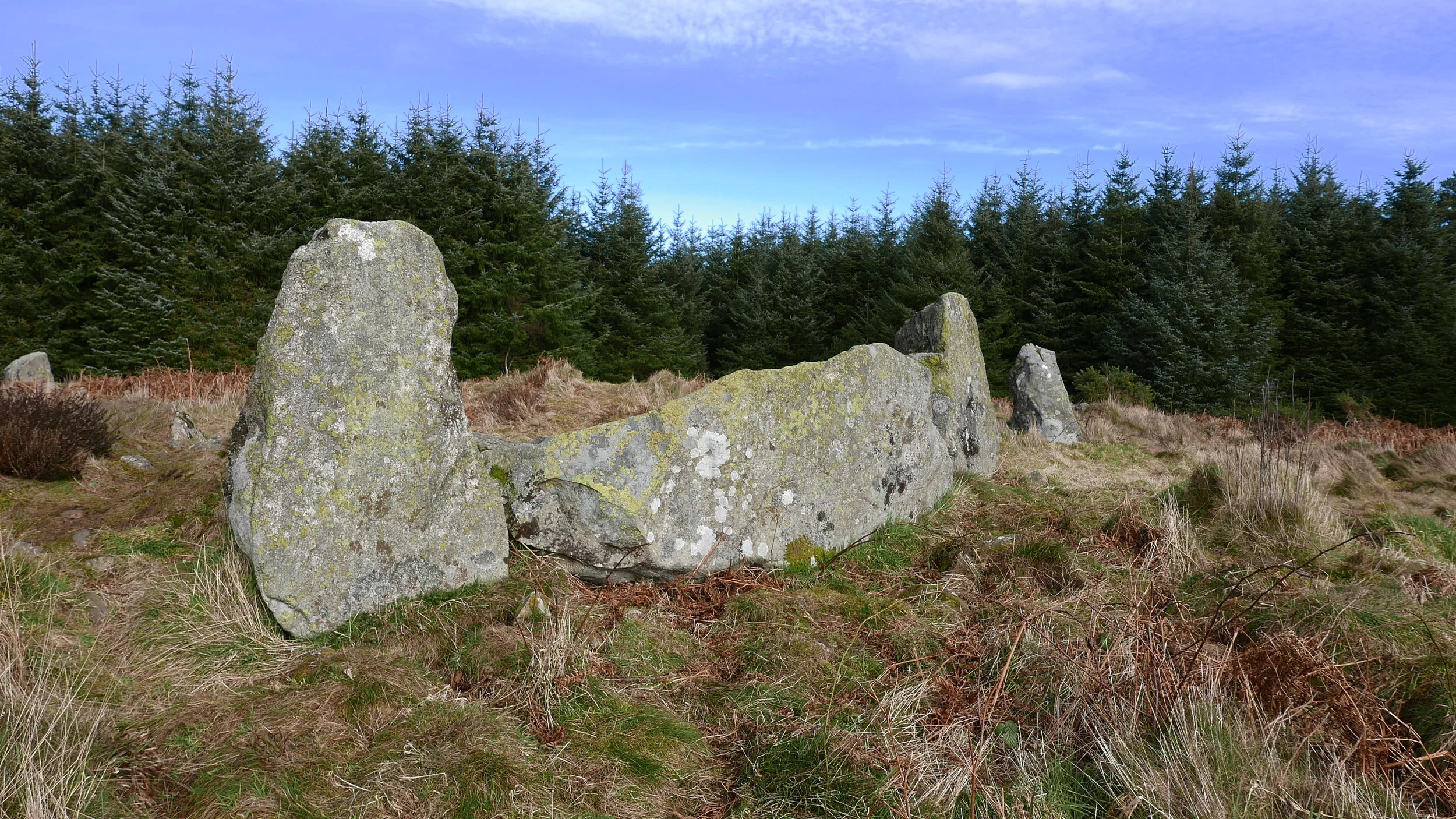I was determined to visit this legendary RSC whose centrepiece is reputed to be the biggest of them all - Corrstones Wood RSC (AKA Muir of Ryhnie)
Two gigantic, and perfectly formed and intact flankers enclose the most gargantuan recumbent in all Aberdeenshire - nay the world. She is fallen however, and broken. And covered with debris from the wooded sheltered glade.
They're not wrong. This could be the biggest of them all. I've seen some BELTERS today (Loanend) and this looks like it could be the BELT-EST. The lens (as I now call them) is 3.5 metres long, 2.5 metres high and 1 metre thick at its base. It is accompanied by two extraordinary posts of 3 metres, each shaped to the traditional point at the top; rounded at the base to allow for accurate positioning with chock stones (and there are always loads of these loose under the stones).
Many, many stones lie buried here. I could kick away the loose turf easily. This stone (1.5 metres length uncovered) had a perfectly flat face, uncommon even for stone age masons. I wondered if it was a forgotten Pictish carved stone. I rubbed its surface carefully with a crumbly piece of limestone to see if any depressions remained. All I could observe were lines running in a confusion.
THIS is the kind of footie I like playing! The pine needles and loose earth come off like the skin off hot custard. I uncovered about 18 inches of the recumbent's base and the same for one flanker and a strange "tombstone" which appeared to show carvings (above).
Corrstones is a scene of destruction, yet a treasure chest and a time machine. There appear to be multiple stone buildings in ruins and with no skills in archaeology I found a broken stone axe, stones that still bore the tool marks of the creator (or destroyer) and large rounded pebbles that appear to have been brought up from the Burn over 5 miles away. I felt absolute certainty that there were buried here, objects of significance. A carved stone ball maybe; at the very very least, artefacts of everyday stone age culture and potentially ritual culture.
Hundreds of years of woodland soil, leaves, branches and moss cover the ring stones, many intact. The site is strewn with other debris (including, bizarrely, stone basins and other old masonry, which is far from a repulsive sight in context with this stone age monument.)











Extraordinary heavy metal circle near Aberdeen Dyce airport. One of the finest, most complete monuments of its kind. The growing urbanisation surrounding it cannot hold this druidic temple back.